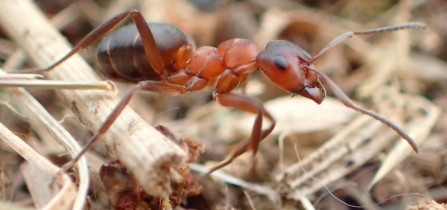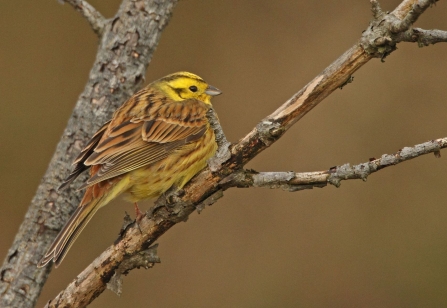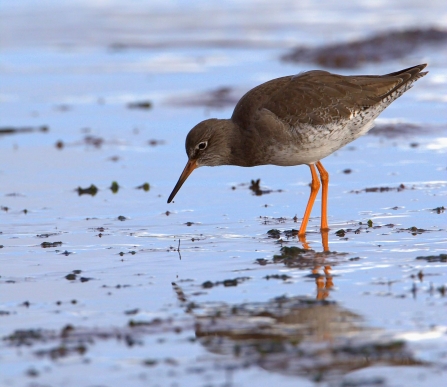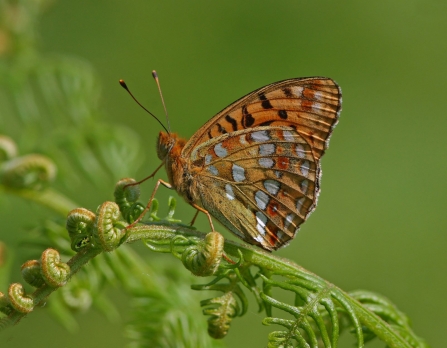Kevin New
Devon Nature Reserves Fund 2019
Devon's precious nature reserves need your help.
Our 57 nature reserves are of fundamental importance to our mission to reverse the declines of Devon’s wildlife.
But they need your help: it costs £50 per day to manage each nature reserve – that’s more than £2,000 each day to care for all 57 reserves. DWT can ensure these sites remain havens for threatened wildlife and inspiring places for people – but only with your support.
Please give to the Devon Nature Reserves Fund in 2019.
A network of wildlife-rich spaces, managed to protect and increase biodiversity, form the stepping stones to a wilder Devon: a future where wildlife is thriving from coast to coast, from Dartmoor to your back door. DWT’s amazing team of dedicated staff and volunteers work year round, in all weathers, to benefit wildlife on these 57 sites.
It costs DWT more than £2,000 per day to manage our 57 nature reserves. Please help us take action today, to secure a brighter future for Devon's wildlife.
Donate to the Devon Nature Reserves Fund 2019
Wildlife success stories on DWT nature reserves
So many stories and statistics about our wildlife tell a sorry tale: of lost wild places, declining species – and of Britain being ‘one of the most nature-depleted countries on earth’. Where can we find the positive stories?
Nature reserves are the first places to look. Animals that have almost disappeared from the wider countryside – from cuckoos and nightjars to glow worms and fritillary butterflies – are thriving on DWT sites.
On nature reserves, thanks to your support, we can turn species-poor farmland back into wildflower-rich grassland; we can use traditional techniques to improve hedges for dormice, bees and farmland birds; we can dig new ponds and create wetland areas for amphibians, dragonflies and wading birds; and we can manage habitats to ensure rare insects have everything they need to complete their whole life cycles.
Success stories on nature reserves tell us two things. One is that wildlife-rich places, like DWT nature reserves, can form the hubs of a network to rebuild our nature-depleted landscapes.
Secondly, it’s clear that we need to continue the essential habitat management activity on our nature reserves that’s working so well for Devon’s threatened wildlife.
Five ways a Nature Reserves Fund donation can support wildlife

Narrow-headed ant by John Walters
A lifeline for species on the brink
DWT’s Bovey Heathfield reserve has a new resident: one of the rarest insects in England. The narrow-headed ant has disappeared from so much of its former range that DWT’s Chudleigh Knighton Heath nature reserve was its sole remaining English home. Until last winter, when as part of the Back from the Brink project led by the charity Buglife, three narrow-headed ant nests were successfully translocated from one DWT heathland reserve to the other. For the first time in many years, the narrow-headed ant is expanding its range.
DWT’s ongoing management of the heathland at Chudleigh Knighton Heath has ensured the survival of the only narrow-headed ant population in the country. The next stage is ensuring suitable habitat for a further narrow-headed ant translocation to a third DWT reserve nearby, Teigngrace Meadow. That means another busy winter of scrub clearance for the team at this reserve too.

Yellowhammer. Photo, Chris Root
Hedges for life
More than 2,000 species of plant and animal can be found in a well-managed Devon hedge. But for bullfinches, yellowhammers, dormice, butterflies and bumblebees to truly thrive, hedges need to be neither cut back severely nor become gappy and neglected. That’s why we undertake a regular programme of hedge management on our reserves, including lots of work this winter at Vealand Farm and extending species-rich hedgerows at Teigngrace Meadow, where surveys have recorded a thriving dormouse population.
We also want to plant new hedges at Bellever Moor and Meadows nature reserve, with 500 plants to go in this winter to benefit moorland birds and small mammals in the heart of Dartmoor.

Redshank. Photo, Neil Bygrave
Home on the water
Birthplace or temporary home; local restaurant or brief stop-over on a long journey: a wetland nature reserve means different things to different birds. That’s why creating and maintaining freshwater habitats is so crucial. At Meeth Quarry DWT has recently installed two sand martin nesting walls overlooking a lake to encourage this regular visitor to breed on site. Transformation of a grazing marsh into saltmarsh through use of a tidal gate at South Efford Marsh has led to increased abundance and diversity of birds. With your support it can remain one of South Devon’s best birdwatching sites.
Bluebell. Photo, Kevin New
More light for woodland plants
Halsdon’s oak woodland is a wonderful wildlife haven, with a network of paths to explore. But as former plantation and parkland, a huge amount of work has been required to remove ornamental shrubs like laurel and rhododendron, as well as some of the mature oaks that had been planted close together a century ago. Where sunlight had previously been blocked from the woodland floor, now the mixture of light and shade has resulted in more areas of bluebells and other wildflowers, while sightings of woodland butterflies and bats have increased. But the efforts to eradicate invasive plants – and prevent them colonising the wood once more - are ongoing.

High brown fritillary butterfly. Photo, Chris Root
Creating space for butterflies
The high brown fritillary butterfly has disappeared from 79% of its former sites in Britain in the last 40 years. Rough grassland slopes on the high ground of DWT’s Dartmoor reserves Dart Valley, Blackadon and Dunsford are critically important homes for the UK’s most endangered butterfly. That’s why every winter, DWT staff and volunteers clear bramble, scrub and dense bracken. This hard work creates the right mixture of sun and shade to encourage the growth of more dog violets, the food plant for the caterpillars of both high brown and pearl bordered fritillaries.
Our wonderful South Devon and Dartmoor nature reserve volunteers brave Dartmoor's wind and rain to maintain these habitats for rare butterflies. At Dart Valley the last three summers have seen populations of pearl bordered fritillaries more than double where we've carried out management work, while high brown fritillaries have increased five-fold. The team also works with partners on nearby land outside the reserve's boundaries, ensuring more joined-up habitat to suit declining insect species like these stunning butterflies.
Caring for such extraordinary places takes time and money and is difficult to fund
Your gift - no matter what size - will make a huge difference. It will be used to fund vital work on our nature reserves, wherever the need is greatest.
